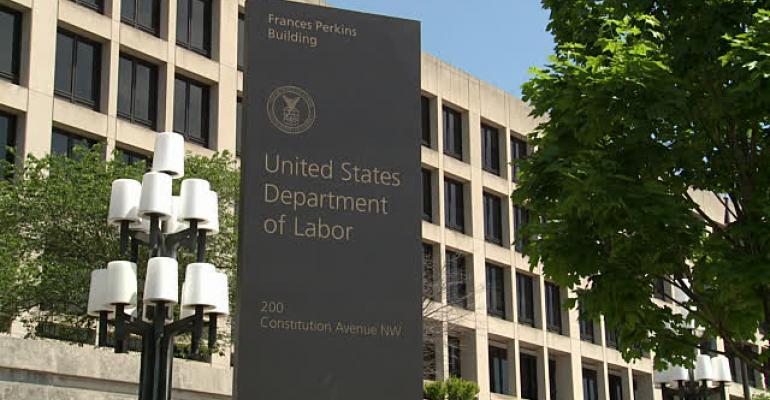In mid-December, the Department of Labor published the final version of its prohibited transaction exemption (PTE). The document highlights the DOL’s view of rollovers as a “primary concern of the Department,” based on the observation that financial institutions and investment professionals “may have a strong economic incentive to recommend that investors roll over assets” into one of their institution’s IRAs.
This emphasis led the DOL to require additional disclosures be provided to prospective rollover-clients in order for advisors to qualify for relief under the PTE’s provisions. Specifically, the advisor/institution must document the reasons for recommending a rollover. “Rollover” in this context can mean from a retirement plan to an IRA or another plan; from an IRA to a plan or another IRA; or between account types such as fee-based to commission-based and vice-versa. The advisor/institution must provide documentation to the investor explaining the reasons for the rollover recommendation before the rollover is transacted.
“The significant change is that the new exemption imposes a number of stringent conditions on the (rollover) recommendation and the rollover IRA that weren’t there before,” according to Fred Reish, attorney and partner with Faegre Drinker. “For example, under the new exemption the firm would need to reduce to writing why the rollover recommendation was in the best interest of the participant and would have to give a copy of that to the participant. I don’t think many people are doing that now and it requires a thoughtful process to gather the needed information and to perform the ‘best interest’ analysis.”
Disclosure Guidance
The DOL listed several factors that advisors and institutions should evaluate and document for rollovers from plans to IRAs, including:
- the retirement investor’s alternatives to a rollover, including leaving the money in his or her current employer’s plan, if permitted, and selecting different investment options;
- the fees and expenses associated with both the plan and the IRA;
- whether the employer pays for some or all of the plan’s administrative expenses;
- the different levels of services and investments available under the plan and the IRA.
For rollovers between IRAs or from a commission-based account to a fee-based arrangement, the DOL says “a prudent recommendation” will include discussion and documentation of the new arrangement’s services. Other factors to review with rollovers per the DOL: “the long-term impact of any increased costs and the reason(s) why the added benefits justify those added costs, as well as the impact of features such as surrender schedules and index annuity cap and participation rates, should be considered as part of any rollover recommendation, as relevant.”
If this higher-level guidance sounds like a version of the SEC’s Regulation Best Interest, you’re right: The DOL specifically references Reg BI’s provisions in the PTE document footnotes.
Meeting the New Requirements
My impression is that most readers of this column already serve as fiduciary registered investment advisors (RIAs) to both their plan-clients and wealth management clients. Jason Roberts, founder and CEO of Pension Resource Institute, LLC, notes that because RIAs are not subject to the SEC’s Reg BI, they may not have anything in place when it comes to documenting rollover recommendations. “While broker-dealers are subject to Reg. BI, which requires particular documentation, there are nuances between the SEC and DOL conditions,” he says.
Consequently, RIAs should consider updating their procedures to comply with some, but not all, of the new requirements, Roberts advises. He cites two reasons for the “some but not all” advice. First, the DOL will allow firms to continue to comply with its temporary enforcement policy (TEP) until December 2021. The TEP requirements are less onerous and create less exposures for advisors and firms then do the conditions of the new PTE. “For example, the PTE requires a written fiduciary acknowledgement and the documented rationale supporting the recommendation to be in the client’s best interest to be delivered to the client before the rollover takes place,” Roberts explains. “It also requires annual testing of compliance procedures specific to the PTE conditions and a sign-off on the findings from a senior executive of the firm. None of this is required under the TEP.”
The second reason Roberts gives is that revised PTE will be held up by the DOL while it reviews it for “questions of law and policy” and that its specific conditions and requirements may change. Reish also sees a likely delay. “The exemption won’t be effective until Feb. 16,” he says. “As a result, the Biden administration will delay the effective date to study the exemption from the administration’s perspective. It may then withdraw or modify it. That’s up in the air. But the interpretation is not a rule. Instead, it is simply the approach that the DOL will use to enforce fiduciary status for rollover recommendations. I think the Biden administration will keep it for the time being while the DOL works on a new fiduciary regulation with an expanded definition of fiduciary advice.”
Despite the probable delay, however, Roberts cautions that advisors shouldn’t ignore the PTE’s provisions. He notes that both the TEP and the PTE require specific documentation be retained that demonstrates an analysis was performed comparing the current plan versus the rollover IRA (or a new plan in some cases), specifically focusing on services, investments and fees.
Roberts advises that new procedures should, at a minimum, describe what information advisors should collect from potential rollover clients, how they analyze the information and document the basis upon which they determined the recommendation to be in the client’s best interest. “We also recommend attestations be signed by clients, particularly in cases where advisors do not recommend the rollover,” he adds.
“Don’t be lulled into a false sense of complacency while the PTE is being held up by the new DOL,” says Roberts. “At a minimum, firms need to incorporate the TEP requirements into their policies and procedures, update disclosures and train advisors and supervisors.”

